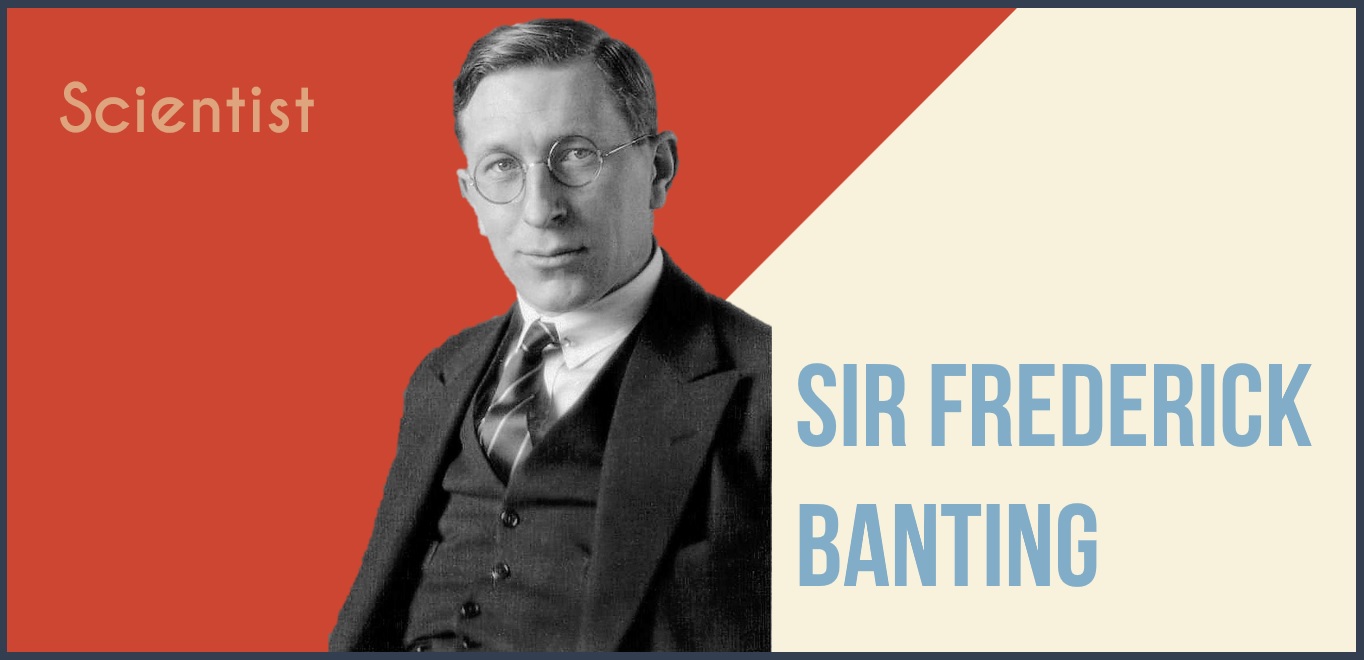Vocabulary
Before reading, translate these words.
Isolation
Insulin
Diabetes
Diabetic
Enlist
Wounded
Resident Surgeon
M.D. degree
Pancreas
Extract
Ground-up
Figure (verb)
Fetus
Genetically engineered
Blackout
g-force
jump suit
Biography
Federick Banting’s greatest accomplishment was the isolation of insulin for the treatment of diabetes. The World Health Organization (WHO) lists insulin as one of the essential medicines. Over 422 million people have diabetes worldwide. Insulin is necessary for nearly all type 1 diabetics and about 21% of type 2 diabetics.
Early Life
Frederick Banting was born on November 14th, 1891 in Alliston, Ontario. He attended the University of Toronto’s General Arts program before being accepted into the medical program in 1912. So, he began medical school in 1912. World War 1 started in 1914 and Banting tried to enlist in the army. He was denied twice (for poor eyesight) before being accepted in 1915.
Doctor
His education was sped up to get more doctors into the war. He graduated from medical school in December of 1916 and immediately joined the war effort. In 1918, he was wounded in the Battle of Cambrai. Even though he was injured, he helped other wounded soldiers for sixteen hours until another doctor told him to stop. His heroism earned him the Military Cross, an award for bravery, in 1919.
After serving in the war, Banting returned to Toronto to complete his surgical training. In 1919 and 1920, he was a Resident Surgeon at The Hospital for Sick Children in Toronto. In 1920, he opened his own clinic in London, Ontario. However, he had to teach part-time at the University of Western Ontario because his business was not too successful. From 1921 to 1922 he lectured at the University of Toronto and earned his MD degree.
Insulin
Banting had to give a lecture about the pancreas to one of his classes at the University of Western Ontario in November 1920. And, like any good teacher, he prepared by doing research. While he was researching, he read an article about the pancreas that interested him. The article suggested that diabetes resulted from a lack of the protein, insulin. However, the attempts to extract insulin from ground-up were unsuccessful.
Banting figured that something was destroying the insulin before they could extract it. He found a way to prevent this from happening. At first, Banting extracted insulin from living dogs, but they didn’t give large enough amount of insulin. Banting discovered that he could extract insulin from the cattle fetuses. Eventually, he was able to extract insulin from the pancreas of adult pigs and cows. This is how insulin (medicine) was created until the 1990s when genetically-engineered bacteria were designed to produce insulin.
The first injection of insulin was given to a 14-year-old Canadian named Leonard Thompson in 1922. Banting received the 1923 Nobel Prize in Physiology or Medicine (with John James Rickard Macleod) for developing insulin. Banting gave half of his prize money to his assistant, Charles Best.
Other Things
Banting is known for his work in insulin, but he had a career after that. He was interested in why pilots blackout when exposed to large g-forces. He helped to invent the G-suit, a jumpsuit that prevents pilots from blacking out. While on his way to England to test the suit, his plane crashed. Both engines failed and only one person survived. It was 1941. Banting died at age 49.
In his personal life, Banting enjoyed painting. There is a famous group of Canadian painters called the Group of Seven. He became friends with some of the artists. By his death in 1941, Banting was one of Canada’s best-known amateur painters. But, he said that he never wanted to make a business out of art. So, instead of selling his paintings, he traded them for paintings from other good artists.
Questions
The questions will guide you through the reading and give a deeper understanding of the text
- What was Banting’s greatest accomplishment?
- How many people in the world have diabetes?
- Where was he born?
- Why did the army deny his application at first?
- Why was his education sped up?
- Why did he receive the Military Cross in 1919?
- Why was Banting interested in learning about insulin?
- What animals did he initially extract insulin from?
- How is insulin (medicine) made now?
- Who did Banting give half of his prize money to?
- What does a G-suit do?
- How did Banting die?
- What was Banting’s hobby?
- What is the biggest health issue currently in the world?


